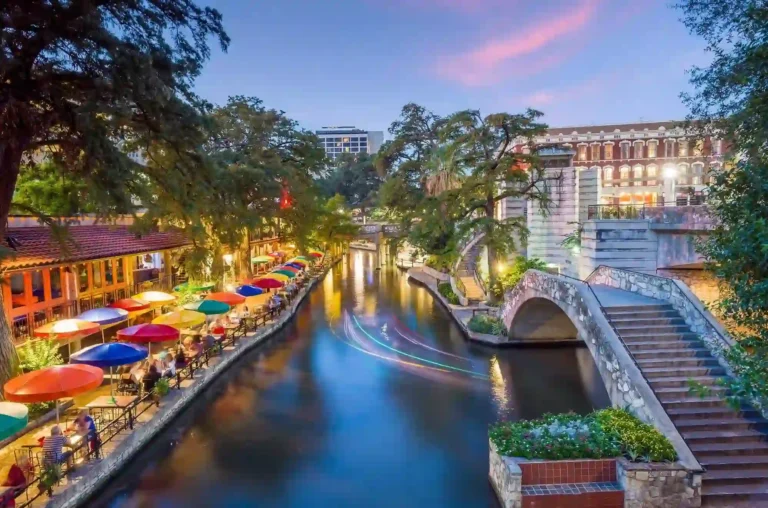18 Cities in America That Feel Like Europe (You’ll Be Surprised)
Cobblestone streets underfoot, pastel façades that catch the morning light, the smell of fresh-baked pastries drifting from a café corner… It’s the kind of scene most people picture when they dream of Europe. But here’s the thing — you don’t always have to cross the Atlantic to experience it. After years of traveling across 40+ countries, I’ve found pockets of European-style towns in America where the charm is so convincing, you half expect to hear church bells echoing from a centuries-old square.
This guide to 18 Cities in America That Feel Like Europe is more than just a checklist. These are places I’ve walked through myself, often with camera in one hand and a notebook in the other, documenting everything from the timber-framed buildings in Washington’s Cascades to the Dutch windmills turning under a Michigan breeze. Some of these cities were shaped by waves of immigrants who brought their languages, recipes, and architectural traditions. Others have embraced a deep respect for Old World design, preserving cobblestone streets and building codes that keep that timeless atmosphere alive.
Why does this matter? Because travel isn’t always about distance — sometimes it’s about immersion. And when you find American towns that feel European, you can taste a French croissant in New Orleans’ French Quarter, wander an Italian-inspired plaza in California, or sip German beer in a Bavarian-style village… without the long-haul flight or jet lag.
In the sections ahead, we’ll explore the historic layers, cultural traditions, and natural landscapes that give these European-like destinations in America their magic. From Spanish-influenced courtyards to Greek island vibes along the U.S. coastline, you’ll see how history, geography, and community spirit come together to create places that truly blur the line between continents.
Understanding the European Feel in U.S. Cities

A. Architectural Influence
One of the first giveaways that a U.S. city has a European charm is in its buildings. I’ve walked through Beacon Hill in Boston, where narrow brick-lined streets feel like stepping into a preserved corner of London. In St. Augustine, Spanish colonial architecture — with its arched doorways and terracotta roofs — mirrors courtyards I’ve strolled through in Andalusia. Many of these towns have historic preservation laws that keep their old façades intact. You won’t see high-rises blocking the skyline here; instead, you’ll find timber-framed buildings in Leavenworth or Bavarian-style architecture in Fredericksburg that make the streetscape feel frozen in time.
B. Cultural Heritage & Traditions
The architecture is just the beginning. Festivals, cuisine, and language bring the Old World closer. I’ve been to Holland, Michigan during Tulip Time Festival — the streets erupt in color, wooden clogs click on the pavement, and the smell of Dutch pancakes fills the air. In New Orleans’ Vieux Carré (French Quarter), jazz spills from street corners while Creole cuisine tempts you with flavors that feel distinctly tied to French and Spanish roots. These are living traditions, not just tourist props.
C. Climate & Geography Parallels
Some of these places even look like their European counterparts thanks to geography. The Cascade Mountains in Washington echo the Alpine peaks I’ve hiked in Switzerland. Coastal towns like Santa Barbara could pass for the Costa del Sol in Spain, with Mediterranean-style buildings framed by palm trees and ocean views. Even lighting plays a role — soft golden hours that make terracotta walls glow just as they do in Tuscany.
D. Travel Value
Here’s the practical truth: visiting European-style cities in the USA can be far more budget-friendly than booking a European vacation. Flights are shorter, language barriers are minimal, and you can still enjoy authentic experiences — whether it’s sampling German beer in New Glarus or wandering a Dutch village without needing a passport. For many travelers, especially families or those on a tighter schedule, these U.S. destinations offer the best of both worlds.
The 18 Cities in America That Feel Like Europe
1. Leavenworth, Washington
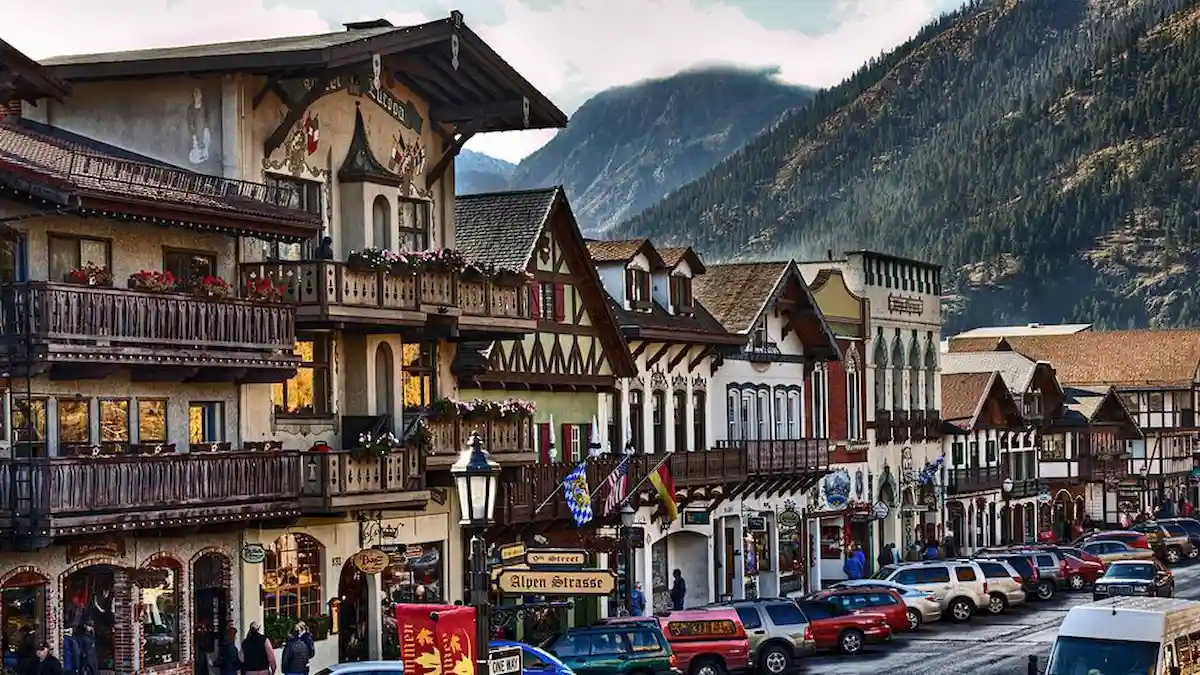
The first time I arrived in Leavenworth, tucked into the Cascade Mountains, I genuinely felt like I’d stumbled into a small Bavarian village. The main street is lined with Bavarian-style buildings, painted with alpine murals and crowned with steep gabled roofs. Flower boxes spill over with bright geraniums in summer, while winter transforms the town into a snow-dusted wonderland straight out of a storybook.
Why It Feels European: The town was redesigned in the 1960s to resemble an alpine village, but the details go deeper than just façades. You’ll hear German folk music during festivals, smell freshly baked pretzels drifting from bakeries, and find German beer halls serving authentic bratwurst and schnitzel.
Must-See Highlights:
- Christmas Lighting Festival — The whole town glows in thousands of lights.
- Oktoberfest — A multi-week celebration with music, dancing, and beer steins raised high.
- Hiking trails that lead to alpine lakes, giving you that Swiss mountain feel.
Best Time to Visit: December for the winter magic or early October for Oktoberfest. Summer’s also great for outdoor activities like rafting and hiking.
Insider Tip: Book your lodging months in advance if you’re visiting during peak festivals. Small inns and chalets fill up quickly, and last-minute rooms can be pricey.
2. Solvang, California
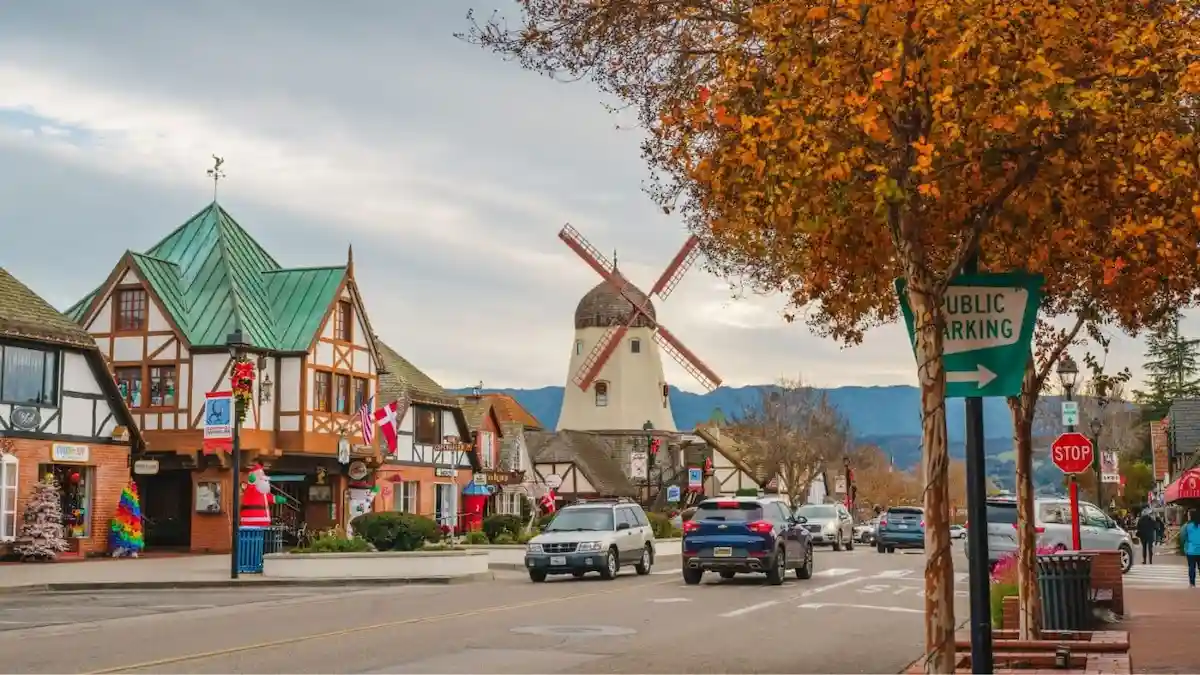
Driving into Solvang feels like you’ve been transported to a Danish countryside town — without leaving California’s Santa Ynez Valley. I still remember my first visit here in spring: the scent of butter and cinnamon from Danish bakeries drifted through the air, while Danish windmills turned slowly against a backdrop of blue sky. The streets are lined with timbered buildings, each with that quaint, fairy-tale aesthetic you’d expect to find in Jutland.
Why It Feels European: Solvang was founded by Danish immigrants in 1911, and the community has kept its heritage alive through architecture, cuisine, and festivals. Street names, shop signs, and even the local museums celebrate Danish culture. You’ll find Hans Christian Andersen tributes scattered around town — including a small but charming museum dedicated to the author.
Must-See Highlights:
- Sampling flaky aebleskivers (puffy Danish pancake balls) at one of the local cafés.
- Touring the Elverhøj Museum of History & Art for a deeper dive into Danish-American culture.
- Snapping photos beside the iconic windmills along Copenhagen Drive.
Best Time to Visit: Spring is beautiful when wildflowers cover the surrounding hills, but December brings a magical Christmas atmosphere, complete with festive markets and lights.
Insider Tip: If you’re here on a weekend, start your day early — by mid-morning, tour buses from Santa Barbara and Los Angeles bring in a wave of visitors. Morning hours are when the streets feel most authentic and relaxed.
3. New Glarus, Wisconsin

New Glarus is one of those places where I found myself slowing down — not because I had to, but because everything about this Swiss village encourages you to savor the moment. Set amid rolling hills and farmland, the town is famous for its Swiss chalet-style buildings, Alpine flower boxes, and community events that blend old traditions with Midwestern warmth.
Why It Feels European: Settled by Swiss immigrants in the mid-1800s, New Glarus has maintained its Alpine culture through yodeling festivals, Swiss folk dancing, and authentic Swiss cheese tours. The town’s love for precision and craftsmanship is evident in everything from its wooden balconies to its bakery displays of braided Zopf bread.
Must-See Highlights:
- Visiting the New Glarus Brewing Company, where you can sample craft beers inspired by European styles — including their legendary Spotted Cow.
- Enjoying a plate of rösti or fondue at a family-run Swiss restaurant.
- Walking through the Swiss Historical Village Museum to see artifacts from the original settlers.
Best Time to Visit: Late summer brings the Wilhelm Tell Festival, a celebration of Swiss culture complete with costumed performances and traditional music.
Insider Tip: This is a small town with limited accommodations, so consider booking a charming bed-and-breakfast well ahead of time, especially during festival weekends.
4. St. Augustine, Florida
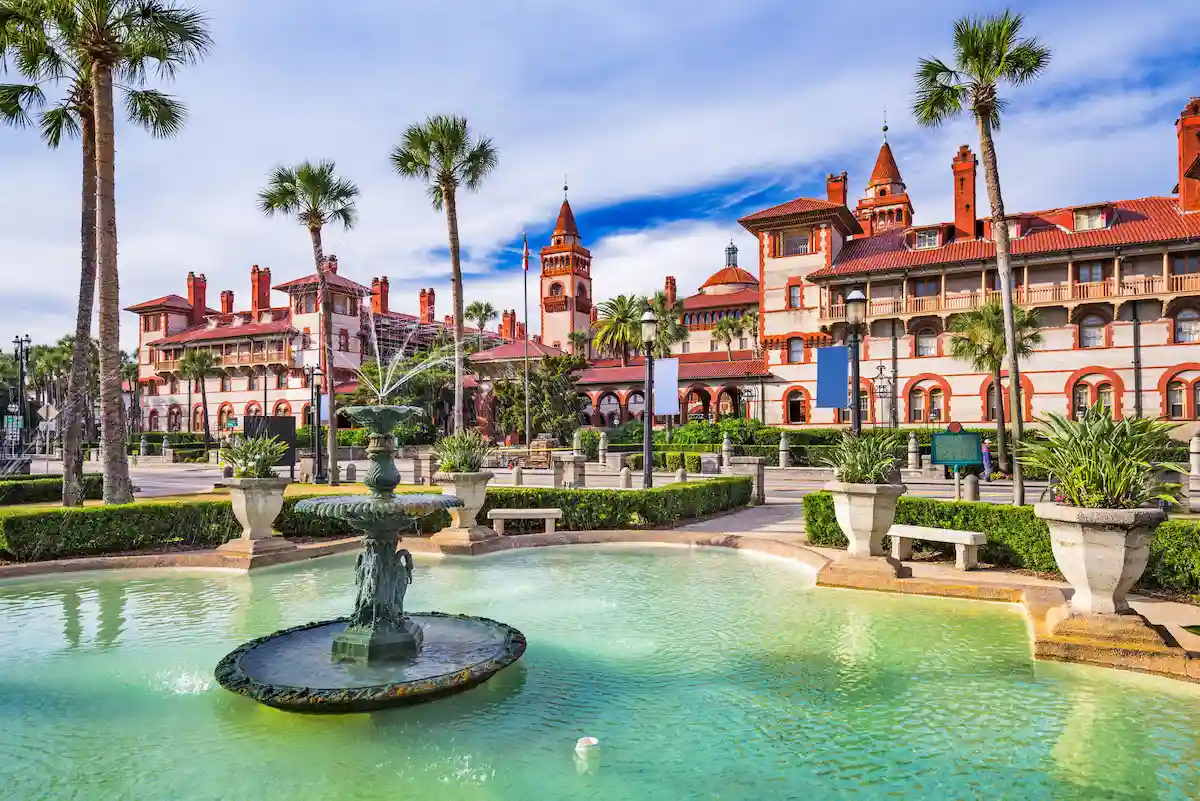
The first time I walked through St. Augustine’s cobblestone streets, I felt the same kind of awe I’ve experienced in Seville and Granada. Founded in 1565, it’s the oldest city in the United States, and its Spanish colonial architecture is still proudly on display. Terracotta roofs, arched doorways, and courtyards shaded by palm trees give the historic district a warm, Mediterranean glow.
Why It Feels European: St. Augustine’s history is deeply tied to Spain’s presence in the New World. Landmarks like the Castillo de San Marcos — a 17th-century fortress overlooking the water — wouldn’t feel out of place along the Spanish coast. The blend of Spanish influence and coastal charm makes it one of the most authentic European-style cities in the USA.
Must-See Highlights:
- Wandering St. George Street for boutique shops, cafés, and live music.
- Touring the Old Ursuline Convent and St. Louis Cathedral for a sense of the city’s religious heritage.
- Taking in views from the top of the St. Augustine Lighthouse.
Best Time to Visit: Late fall is ideal — cooler temperatures, fewer crowds, and still plenty of sunshine.
Insider Tip: Many travelers stick to the main streets, but venturing into the quieter residential lanes reveals some of the city’s most beautiful and well-preserved homes.
5. Holland, Michigan
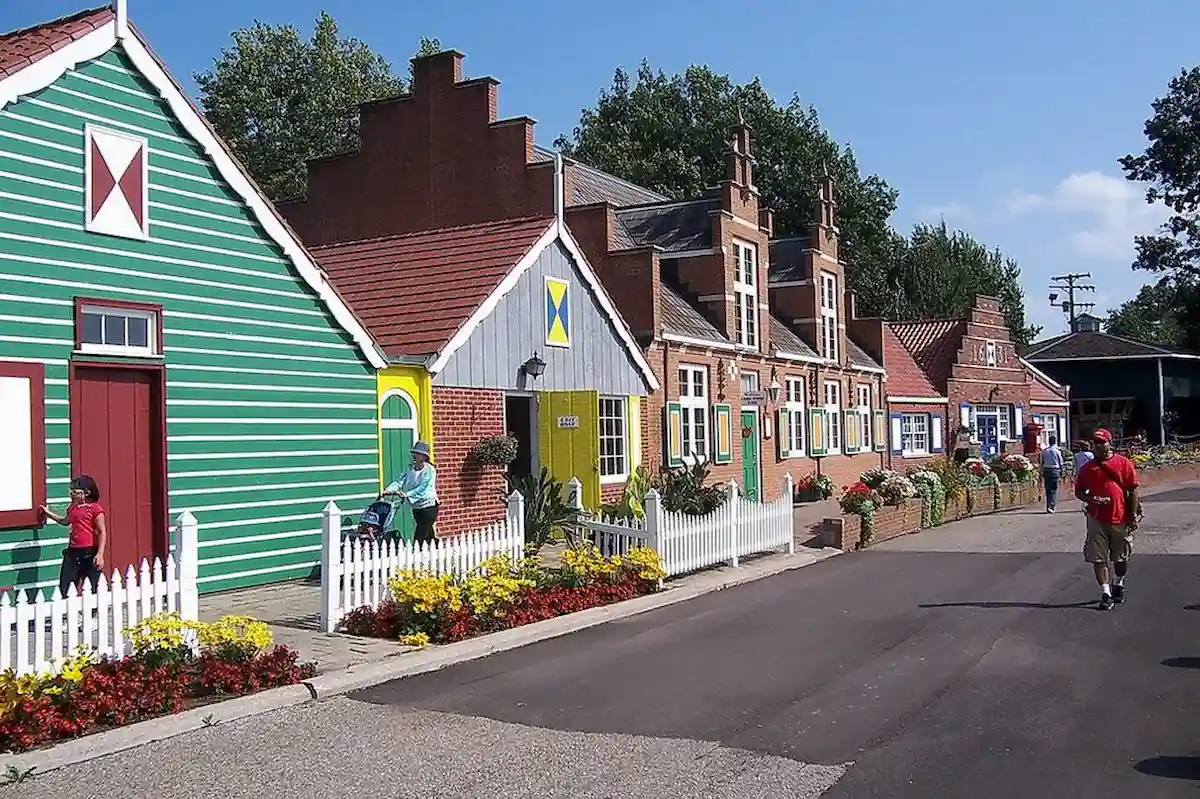
Every May, Holland transforms into a living postcard during its Tulip Time Festival. Streets, parks, and gardens erupt in a sea of color, with millions of tulips swaying in the breeze — an unmistakable nod to the town’s Dutch heritage. Walking past the DeZwaan Windmill or through Nelis’ Dutch Village, I’ve often had to remind myself I’m in Michigan, not the Netherlands.
Why It Feels European: Dutch settlers founded Holland in the mid-1800s, and their influence is still everywhere — from canals to Dutch bakeries serving stroopwafels. The town’s commitment to preserving its heritage has made it a favorite for travelers seeking Dutch charm without an overseas flight.
Must-See Highlights:
- Strolling Windmill Island Gardens when the tulips are in full bloom.
- Sampling poffertjes (tiny, fluffy pancakes) at a festival stall.
- Visiting the Holland Museum to learn about the town’s immigrant history.
Best Time to Visit: The Tulip Time Festival in early May is the obvious choice, but summer offers warm lake breezes and fewer crowds.
Insider Tip: For the best photos, head to Windmill Island Gardens right at opening time — before the tour buses arrive.
6. Vail, Colorado
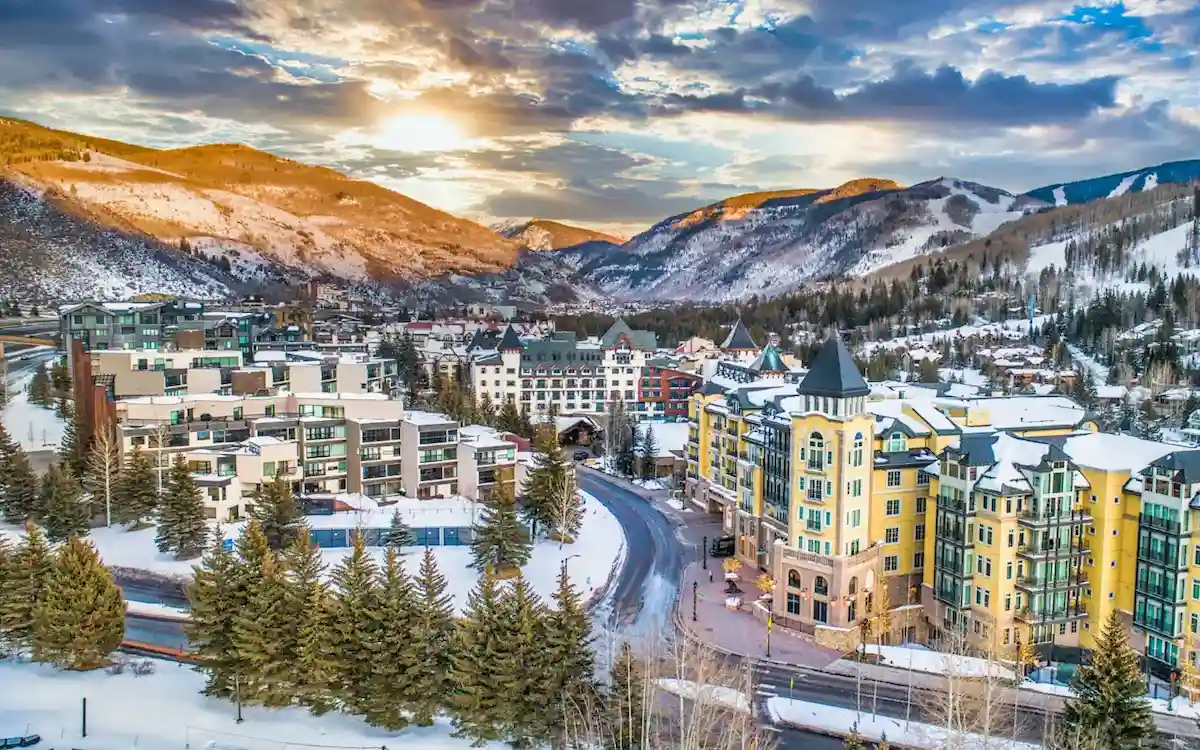
Vail is one of the few U.S. towns where I’ve experienced that crisp Alpine atmosphere both in summer and winter. With Swiss chalet-style lodges, cobblestone walkways, and breathtaking views of the surrounding peaks, it feels like a resort town in the heart of the Alps.
Why It Feels European: The village was designed with a Swiss and Austrian aesthetic in mind, from the timber-framed buildings to the après-ski culture. Walking through Vail in December — with snow lightly falling and holiday lights glowing — could easily be mistaken for a stroll through Zermatt.
Must-See Highlights:
- Skiing or snowboarding the expansive slopes in winter.
- Hiking to Booth Falls in summer for wildflower-dotted trails.
- Enjoying a fondue dinner at a mountainside restaurant.
Best Time to Visit: Winter is iconic for snow sports, but late summer offers perfect hiking weather and fewer visitors.
Insider Tip: Even if you’re not skiing, take the gondola up for panoramic mountain views — the ride itself is worth the ticket.
7. Charleston, South Carolina
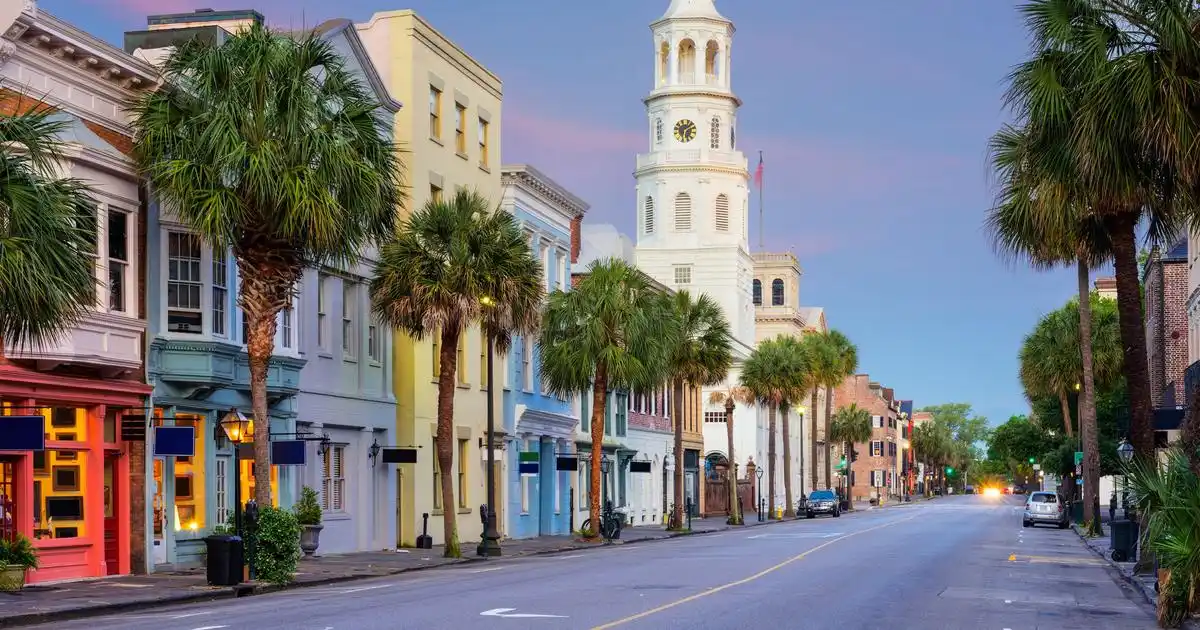
Charleston is one of those places where history isn’t just preserved — it’s alive. Strolling through the pastel-painted Georgian homes of the historic district or the French Quarter’s cobblestone streets, you’ll feel the same romance as you might wandering through an old European port city. The air smells faintly of jasmine, and the warm Southern breeze carries the sound of church bells from centuries-old steeples.
Why It Feels European: Charleston’s architecture blends British Georgian influence with French Huguenot touches, thanks to the city’s diverse colonial past. Many of the wrought-iron balconies and hidden garden courtyards could be lifted straight from Paris or Bordeaux.
Highlights:
- Taking a historic walking tour to hear stories of pirates, plantation history, and architectural secrets.
- Admiring the famous Rainbow Row, a colorful stretch of Georgian townhouses.
- Exploring the French Quarter, where art galleries sit alongside centuries-old churches.
Best Time to Visit: Spring is unbeatable when the azaleas bloom in brilliant pinks and purples. The city’s gardens and parks look like a living painting.
Insider Tip: Charleston’s charm comes alive early in the morning — wander before the tour carriages start rolling for an uninterrupted, almost cinematic experience.
8. New Orleans, Louisiana
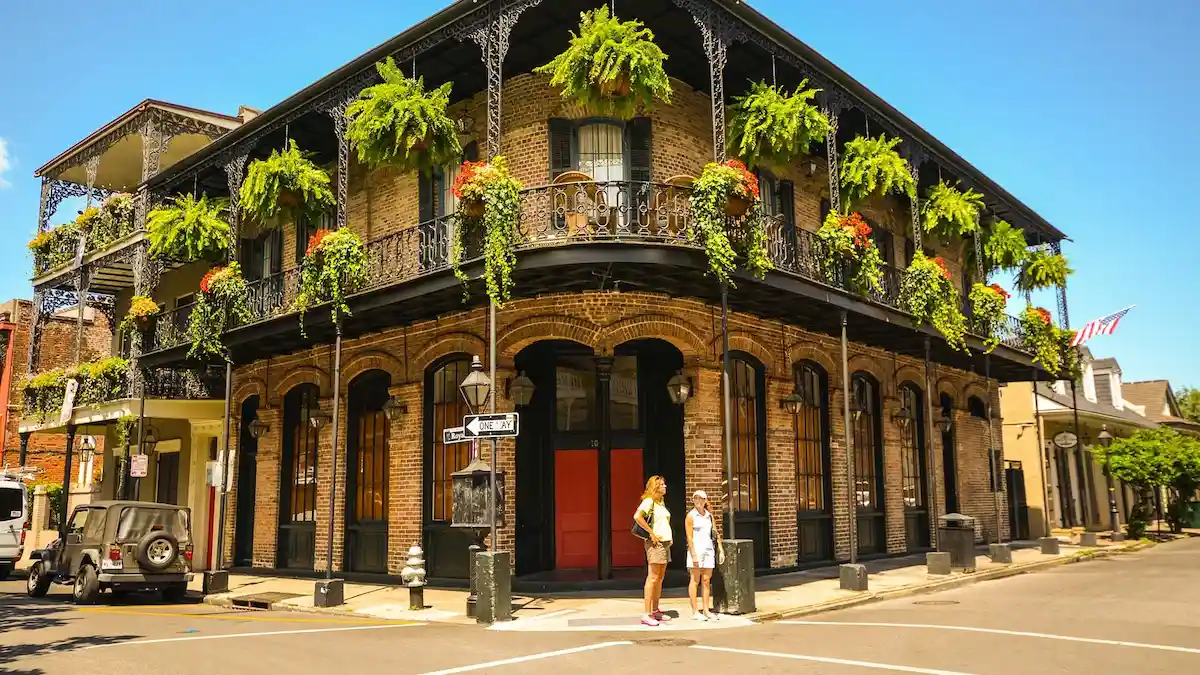
New Orleans is a sensory feast — a mix of French and Spanish colonial architecture, Creole cuisine, and jazz that spills out into the streets. Walking through the French Quarter, with its cast-iron balconies draped in flowers, I often feel like I’m somewhere between Seville and Marseille.
Why It Feels European: The city’s history is steeped in both French and Spanish rule, reflected in the architecture, language, and food. From the colorful Creole cottages to grand colonial mansions, every block has a hint of Old World elegance.
Highlights:
- Exploring the French Quarter for street performers, cafés, and antique shops.
- Listening to live music in a jazz club on Frenchmen Street.
- Experiencing Mardi Gras — or visiting during quieter months to soak in the atmosphere without the crowds.
Local Tip: Skip Bourbon Street if you want the authentic side of New Orleans. Instead, head to Frenchmen Street for music or the Garden District for historic mansions and oak-lined avenues.
Best Time to Visit: Late winter and spring offer pleasant weather, while summer is hot but alive with festivals.
9. Cape May, New Jersey
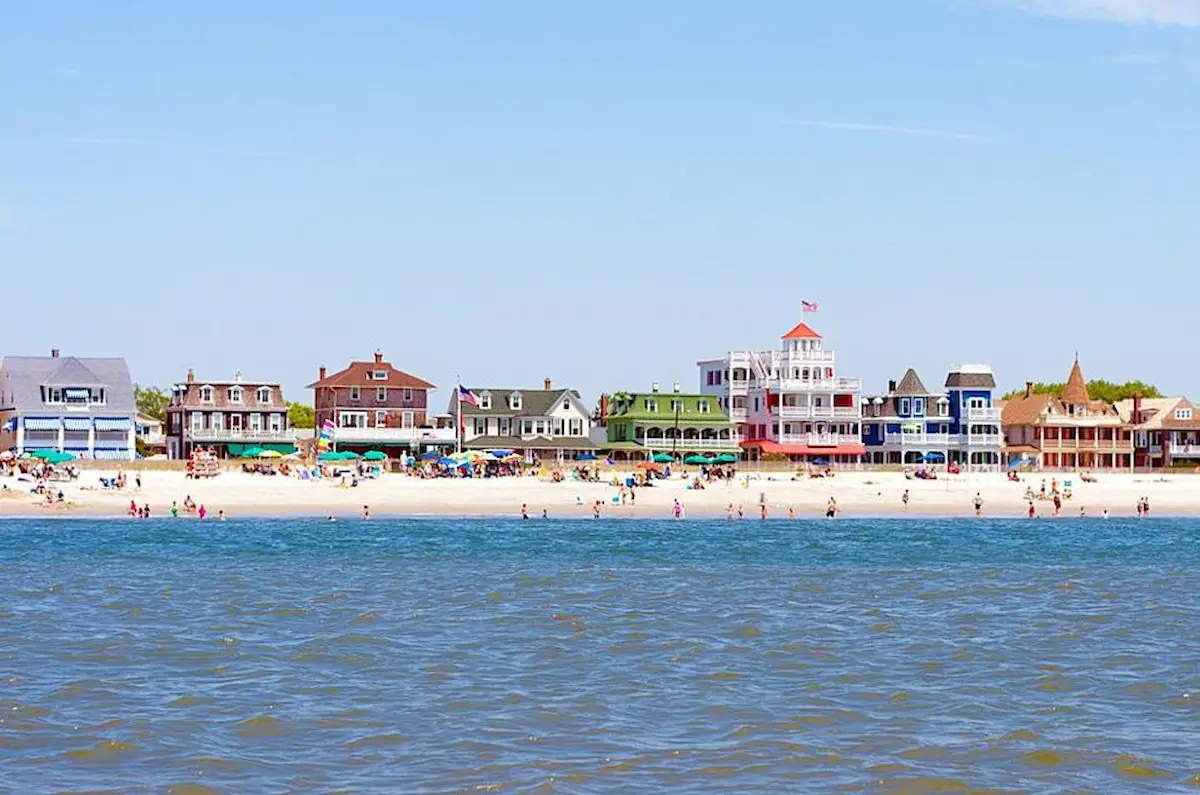
Cape May feels like stepping into a Victorian seaside resort from a bygone era. Rows of ornate, colorful houses line the shore, and the salty Atlantic breeze carries the sound of horse-drawn carriages clipping along Beach Avenue.
Why It Feels European: While Victorian architecture is technically British in origin, Cape May’s seaside charm feels reminiscent of the English Riviera or coastal towns in northern France. The attention to detail in its gingerbread-trimmed homes rivals that of any Old World resort.
Highlights:
- Relaxing on the beach and watching dolphins in the surf.
- Taking a horse-drawn carriage ride through the historic district.
- Visiting the Cape May Lighthouse for panoramic ocean views.
Best Time to Visit: Late spring and early fall are perfect — warm enough for the beach but without summer’s crowds.
Insider Tip: Stay in a restored Victorian B&B for the full Cape May experience — many include afternoon tea service, adding to the European atmosphere.
10. Boston, Massachusetts
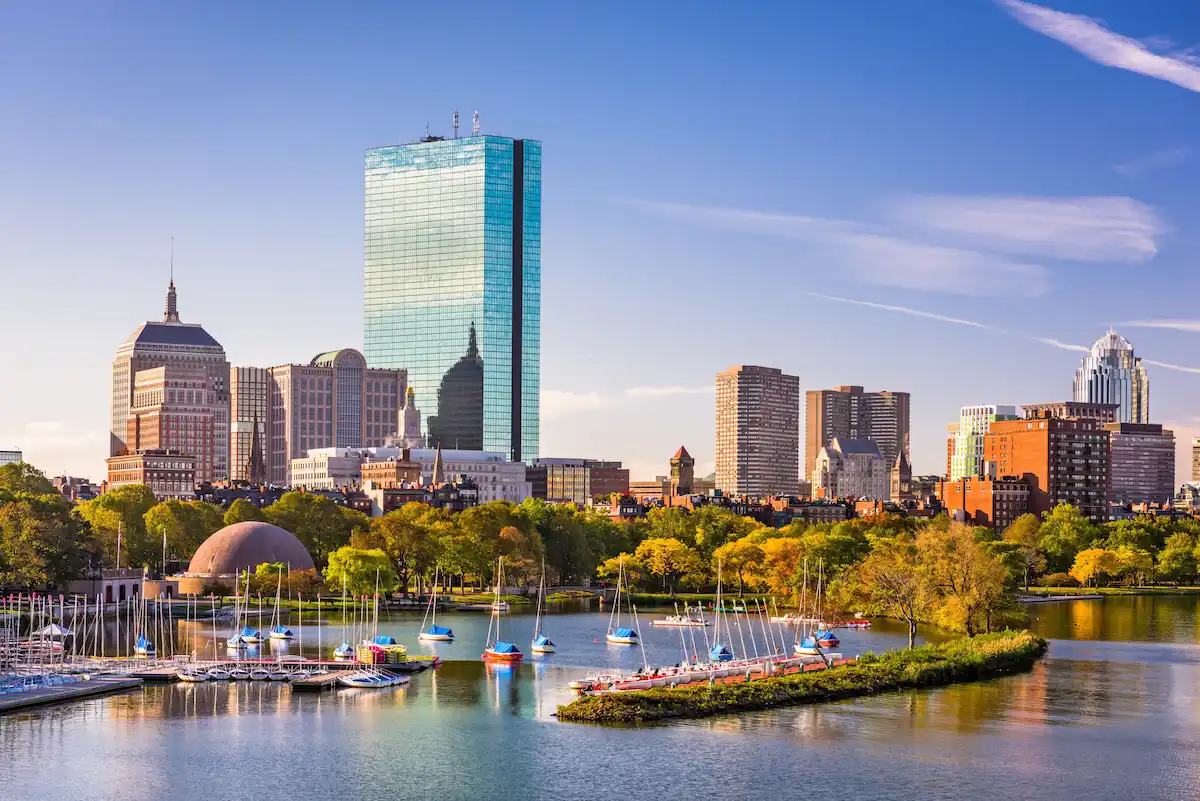
Boston is a city where history isn’t confined to museums — it’s woven into the streets themselves. Walking along the Freedom Trail, you’ll pass historic churches, colonial meeting houses, and charming old pubs that wouldn’t look out of place in London or Edinburgh.
Why It Feels European: Boston’s narrow, winding streets and red-brick buildings reflect its British colonial roots. Neighborhoods like Beacon Hill have gas-lit lanterns, brick sidewalks, and Georgian townhouses that transport you back to the 18th century. Even the pub culture here feels distinctly British — cozy, wood-paneled interiors serving hearty fare and local ale.
Highlights:
- Following the Freedom Trail, a 2.5-mile route linking 16 historic sites.
- Wandering Beacon Hill, one of the most photogenic neighborhoods in the country.
- Enjoying a pint in a historic tavern like the Bell in Hand, America’s oldest bar.
Best Time to Visit: Fall is magical in Boston, with crisp air, fiery foliage, and historic streets framed by golden leaves.
Insider Tip: Many visitors stick to the main trail, but venturing into smaller side streets reveals some of the city’s most beautiful architecture and hidden gardens.
11. Carmel-by-the-Sea, California
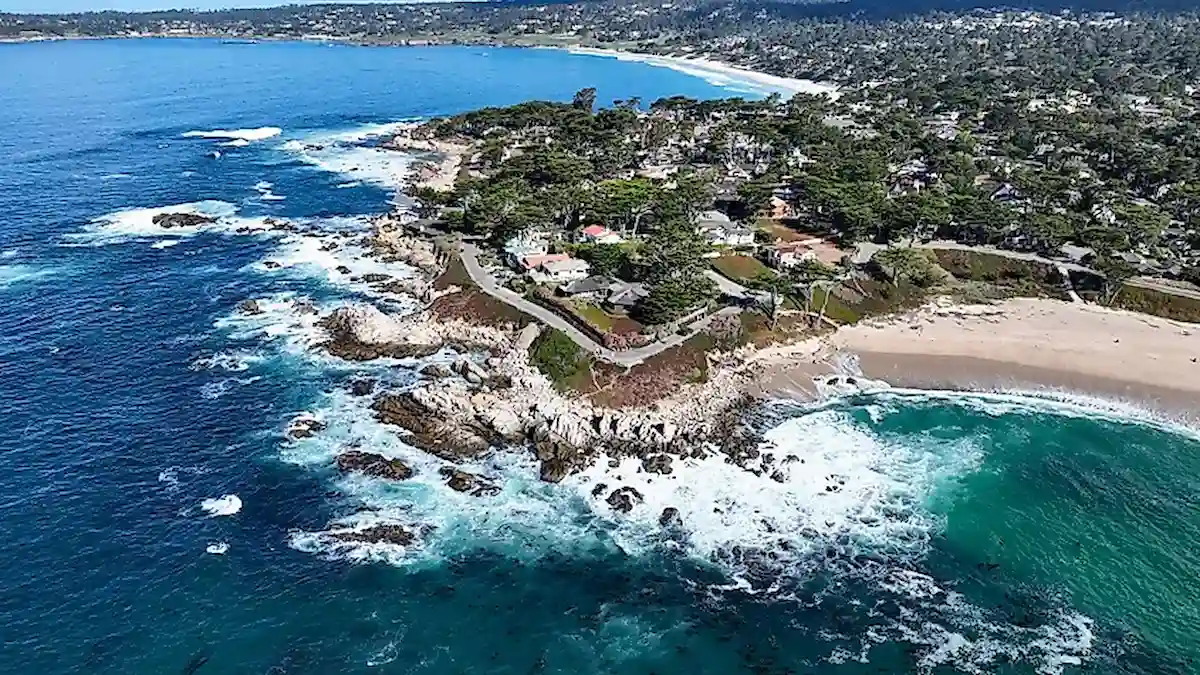
Carmel-by-the-Sea is pure storybook magic. Nestled on the rugged California coastline, this tiny village is filled with whimsical cottages, art galleries, and Mediterranean-style courtyards. It feels like a fairytale town along the French Riviera or Spanish coast.
Why It Feels European: The town’s storybook architecture was inspired by old English villages, while its coastal charm and tiled rooftops evoke Mediterranean seaside towns. Add in the Carmel Mission, a beautiful Spanish colonial landmark, and you have a place where Europe’s architectural styles converge.
Highlights:
- Browsing art galleries showcasing both local and international talent.
- Visiting the historic Carmel Mission Basilica.
- Strolling the white sand of Carmel Beach with views of Pebble Beach Golf Links.
Best Time to Visit: Late spring and early fall offer mild weather and fewer crowds.
Insider Tip: There are no street addresses in Carmel — part of its charm — so navigating by landmarks is the way to go.
12. Newport, Rhode Island
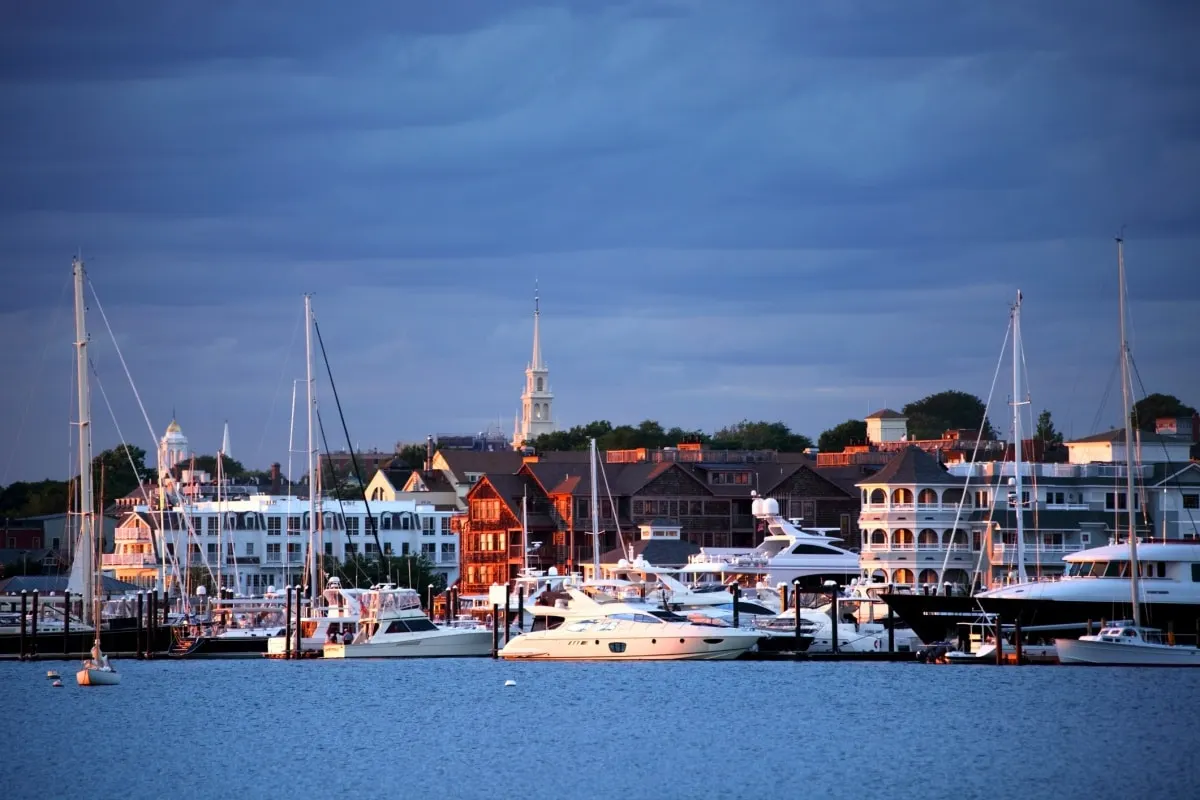
Newport is the definition of Gilded Age elegance. Known for its grand mansions and sailing heritage, this coastal city could easily pass for a seaside town in southern France.
Why It Feels European: The Newport Mansions, like The Breakers and Marble House, were inspired by French châteaux and Italian palaces. Walking along the Cliff Walk, with waves crashing against the rocky shore on one side and opulent estates on the other, feels like a scene from the Côte d’Azur.
Highlights:
- Touring the Newport Mansions to step inside America’s most lavish homes.
- Taking the Cliff Walk for ocean views and architectural grandeur.
- Experiencing the city’s sailing culture, especially during regattas.
Best Time to Visit: Summer offers the full sailing season, while fall brings quieter streets and golden coastal light.
Insider Tip: Sunset from Ocean Drive is unforgettable — bring a picnic and watch the sailboats drift by.
13. Savannah, Georgia

Savannah is a city that feels like it’s been plucked from a European painting and carefully set along the Georgia coast. Its oak-lined streets draped in Spanish moss create a timeless atmosphere, while its wrought-iron balconies and perfectly preserved squares echo the charm of European cities like Seville or Bordeaux.
Why It Feels European: Savannah’s design was inspired by 18th-century city planning, with public squares surrounded by historic homes and churches. The combination of Georgian, Gothic Revival, and Greek Revival architecture makes it a living museum of Old World styles.
Highlights:
- Wandering River Street, lined with cobblestones and historic warehouses turned into shops, cafés, and galleries.
- Taking a ghost tour, which taps into Savannah’s centuries-old legends.
- Exploring Forsyth Park, with its iconic fountain that looks like it belongs in a European capital.
Best Time to Visit: Spring brings fragrant blooms and perfect walking weather, while autumn offers cooler temperatures and fewer crowds.
Insider Tip: Many of Savannah’s most beautiful gardens are tucked behind gates — book a home and garden tour for a peek into the city’s most private and stunning spaces.
14. Alexandria, Virginia
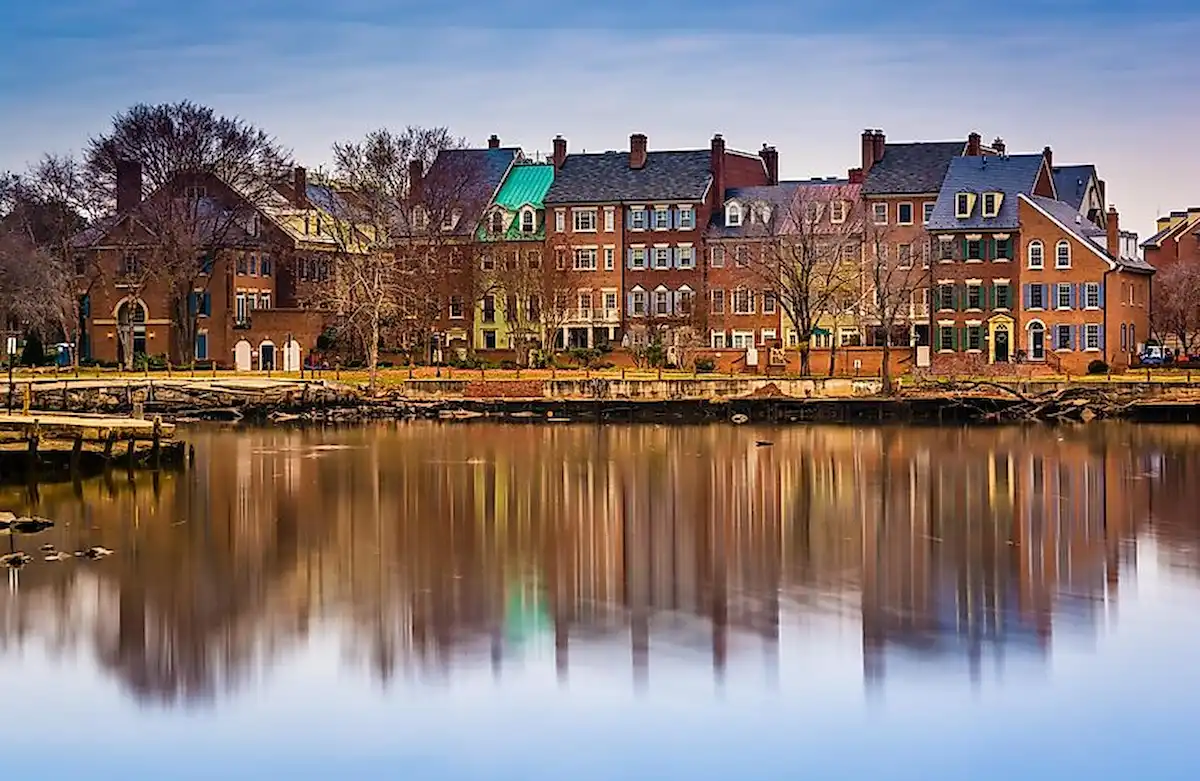
Just across the river from Washington, D.C., Alexandria’s Old Town is like stepping into an 18th-century port city in Europe. Its brick townhouses, cobblestone alleys, and historic waterfront have a distinctly Old World charm.
Why It Feels European: The preserved architecture reflects the influence of British colonial design, and its walkable streets make it feel like a riverside town in England or Scotland.
Highlights:
- Strolling along King Street, where boutiques, antique shops, and cafés line the sidewalks.
- Dining at a waterfront restaurant with views of the Potomac River.
- Visiting the Torpedo Factory Art Center for local and international art exhibitions.
Best Time to Visit: Autumn brings crisp air and colorful leaves, making the city’s historic streets even more picturesque.
Insider Tip: Take the water taxi to Georgetown or the National Harbor — it’s a scenic, relaxing way to travel that enhances the European feel.
15. Asheville, North Carolina
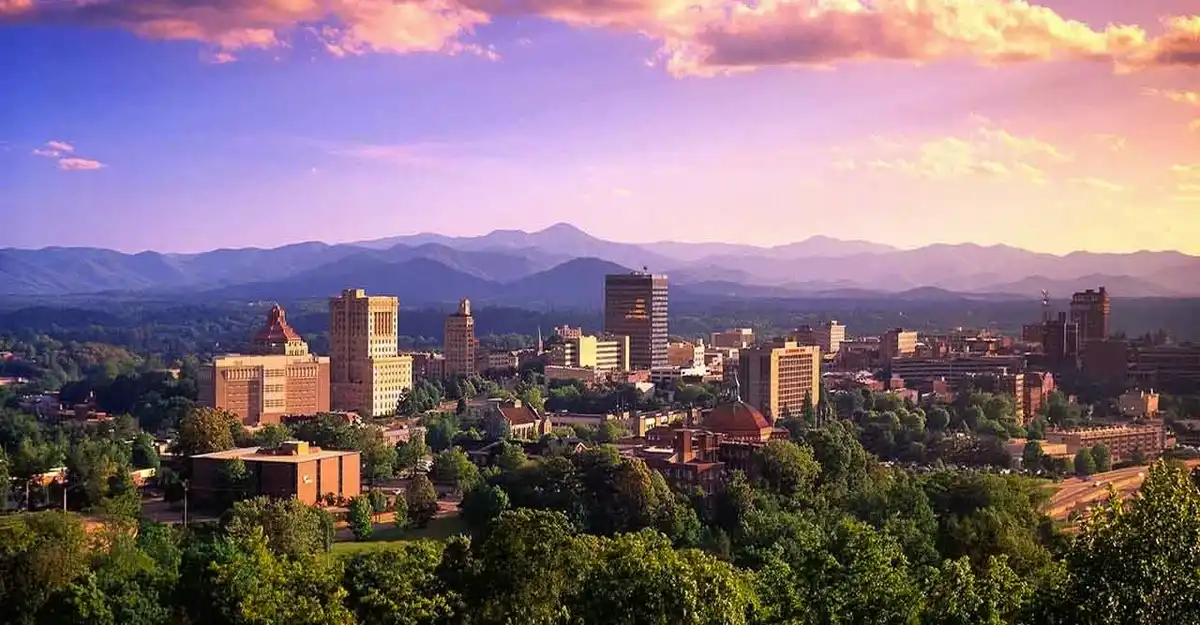
Asheville combines Blue Ridge Mountain beauty with the elegance of European architecture. The crown jewel is the Biltmore Estate, a sprawling mansion inspired by French Renaissance châteaux.
Why It Feels European: Built by George Vanderbilt in the late 19th century, the Biltmore’s design mirrors the grandeur of estates in the Loire Valley of France. Asheville’s thriving arts district, craft breweries, and farm-to-table dining add to its cosmopolitan appeal.
Highlights:
- Touring the Biltmore Estate, including its manicured gardens and winery.
- Exploring the River Arts District, where artists’ studios are open to visitors.
- Driving the Blue Ridge Parkway for breathtaking views.
Best Time to Visit: Fall foliage season is spectacular, but spring brings lush greenery and blooming gardens at the estate.
Insider Tip: Pair your visit with one of Asheville’s many food or beer festivals to enjoy its vibrant culinary scene.
16. Fredericksburg, Texas
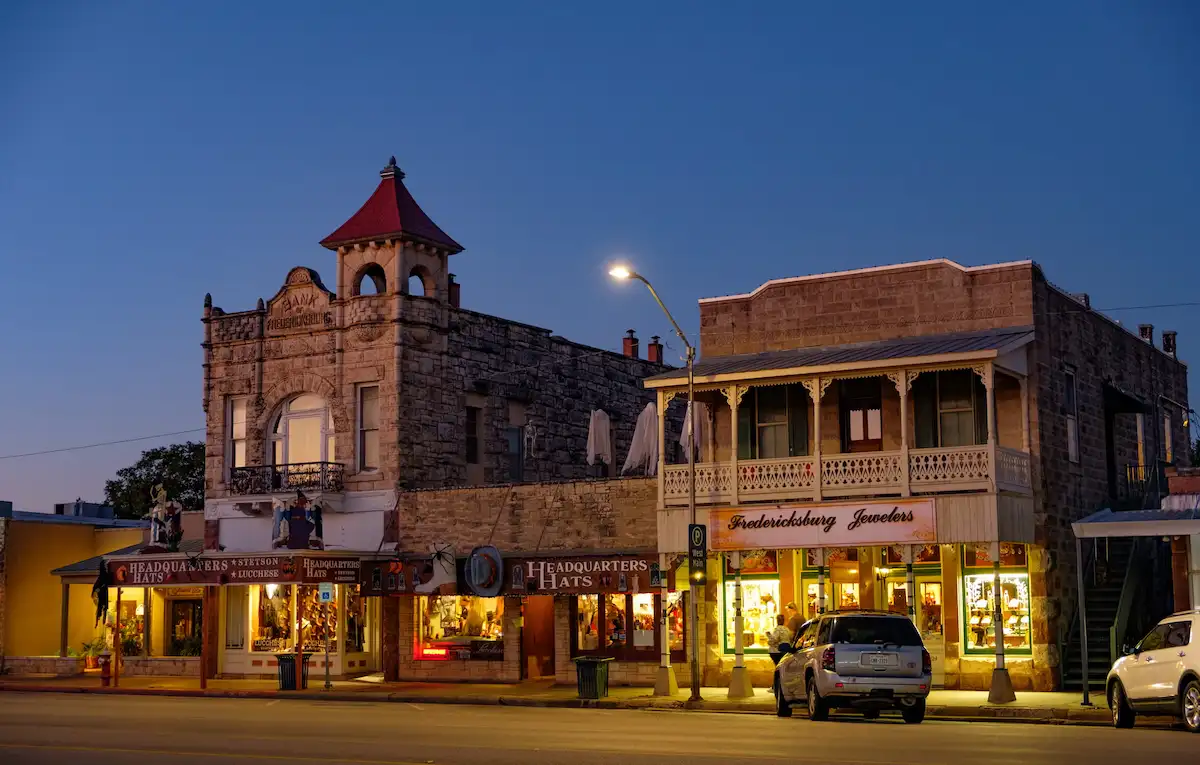
Nestled in the heart of the Texas Hill Country, Fredericksburg is a charming blend of small-town hospitality and authentic German heritage. Founded in 1846 by German settlers, the town still feels like a transplanted Bavarian village, complete with half-timbered buildings, traditional bakeries, and biergartens.
Why It Feels European: From its historic churches to its German-language street signs, Fredericksburg honors its roots with an authenticity you can taste, see, and hear. You’ll find schnitzel and bratwurst served in family-run restaurants, and locals still celebrate Oktoberfest with the same enthusiasm as their ancestors.
Highlights:
- Exploring the surrounding Texas wine country, home to more than 50 wineries producing award-winning vintages.
- Sampling hearty German fare at spots like the Old German Bakery & Restaurant.
- Visiting the Pioneer Museum to learn about the town’s early settlers.
Best Time to Visit: Spring brings wildflower blooms, especially the famous Texas bluebonnets, while autumn offers cooler weather and lively Oktoberfest celebrations.
Insider Tip: Many wineries along Highway 290 offer shuttle services, so you can enjoy tastings without worrying about driving.
17. San Antonio, Texas
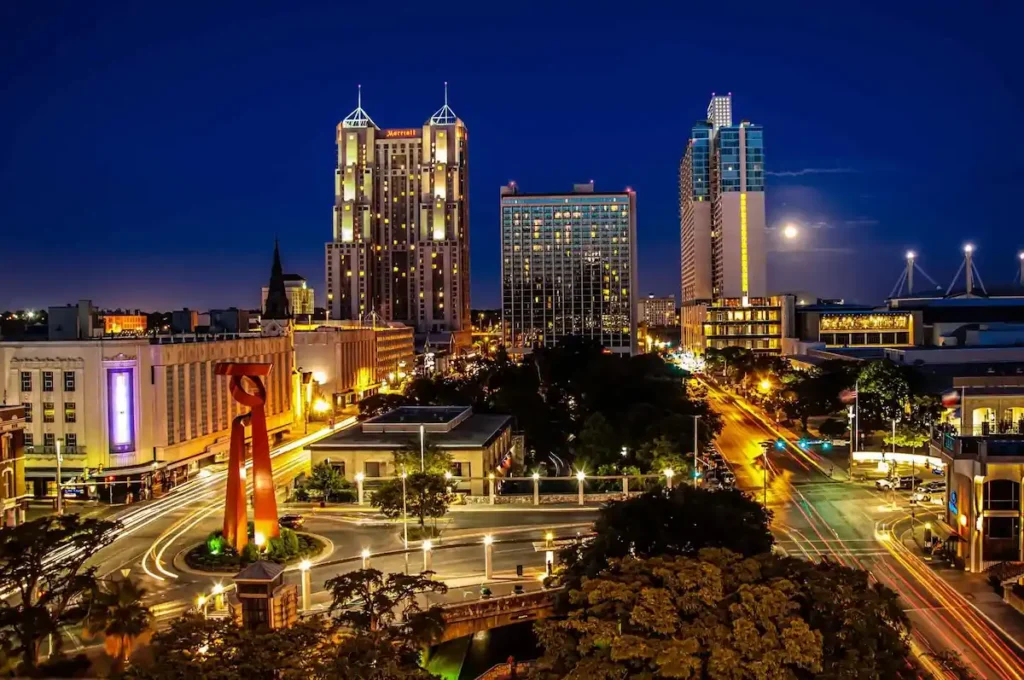
San Antonio captures the spirit of Spanish colonial cities, with its historic missions, colorful plazas, and the iconic River Walk — a lively waterfront promenade lined with restaurants, shops, and live music.
Why It Feels European: The city’s layout, anchored by plazas and missions, reflects 18th-century Spanish city planning. Its UNESCO-listed San Antonio Missions National Historical Park offers a window into the city’s colonial past, reminiscent of southern Spain or Mexico’s historic centers.
Highlights:
- Visiting The Alamo, the most famous of the missions.
- Taking a boat ride along the River Walk to see the city from a unique angle.
- Enjoying cultural festivals like Fiesta San Antonio, which fills the city with music, food, and parades.
Best Time to Visit: Late fall and early spring bring pleasant weather and fewer crowds, making it ideal for walking tours.
Insider Tip: Skip the busiest River Walk restaurants and try smaller eateries tucked into side streets for a more authentic experience.
18. Philadelphia, Pennsylvania
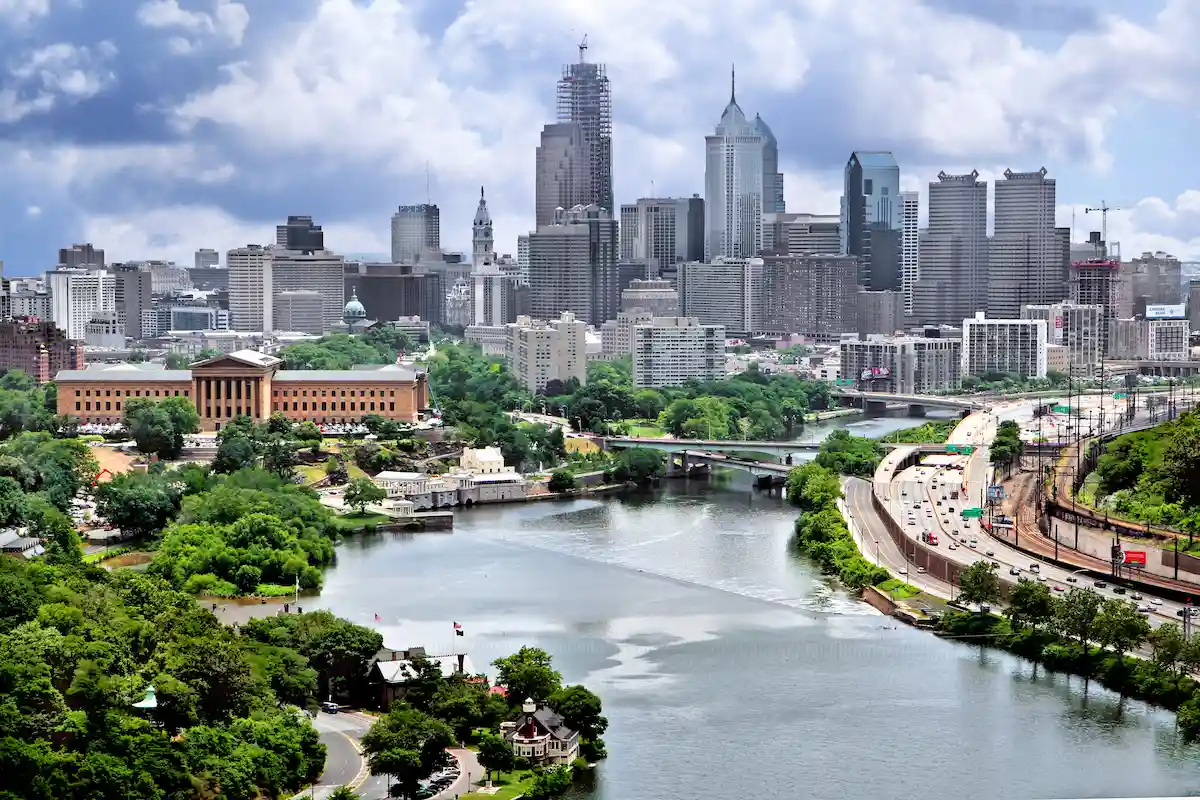
Philadelphia blends historic architecture, cobblestone streets, and a thriving food scene that feels straight out of Europe. Strolling through Old City, you’ll pass 18th-century rowhouses, leafy courtyards, and bustling markets.
Why It Feels European: Philadelphia’s colonial architecture, narrow streets, and public squares recall London or Edinburgh. Its neighborhoods, each with distinct character, offer the kind of diversity and walkability found in many European capitals.
Highlights:
- Standing in the same room as America’s Founding Fathers at Independence Hall.
- Browsing the Reading Terminal Market, where you can sample everything from Amish pretzels to artisanal cheeses.
- Exploring the Philadelphia Museum of Art and its surrounding Fairmount neighborhood.
Best Time to Visit: Spring and autumn offer mild weather and vibrant seasonal events.
Insider Tip: Many of the city’s best sights are within walking distance — pair Old City with a loop through Rittenhouse Square for the perfect urban stroll.
Planning Your European-Style U.S. Trip
Creating the perfect itinerary for exploring the 18 cities in America that feel like Europe starts with smart planning. Whether you want to recreate the romance of Paris, the charm of a Bavarian village, or the coastal elegance of the Mediterranean, the key is to group destinations by region to save both time and money.
How to Create an Itinerary
The easiest way to organize your trip is by clustering cities within the same geographic area. For example:
- Northeast Corridor: Boston, Newport, Cape May, and Philadelphia can be connected by Amtrak for a seamless, car-free experience.
- Southern Charm Route: Charleston, Savannah, Alexandria, and New Orleans offer a mix of colonial, French, and Spanish influences.
- Western Wonders: Leavenworth, Carmel-by-the-Sea, and San Francisco make for a diverse West Coast loop.
- Texas Trails: Fredericksburg and San Antonio deliver German and Spanish heritage in one state.
This regional approach means less transit time and more hours soaking in the local European-inspired culture.
Budgeting Tips
One of the biggest advantages of visiting these European-style U.S. cities is cost savings compared to flying overseas. Flights within the country are often a fraction of the price of transatlantic travel, and you won’t have to deal with currency exchange rates or international roaming fees. Accommodation prices vary widely, but booking in shoulder seasons can yield rates 20–30% lower than peak months.
If you’re on a tight budget, mix high-end destinations with more affordable spots. For example, pair pricey Carmel-by-the-Sea with budget-friendly Asheville or Fredericksburg for a balanced itinerary.
Transportation Advice
Traveling between these cities can be a scenic experience in itself. In the Northeast, trains are efficient and connect city centers directly. In the South and Midwest, renting a car offers more flexibility, especially for small towns like Leavenworth or Fredericksburg. For West Coast trips, a mix of coastal drives and short flights works best.
Seasonal Planning
The magic of these destinations often changes with the seasons:
- Spring: Charleston’s azalea bloom, Fredericksburg’s wildflowers, and Philadelphia’s cherry blossoms.
- Summer: Coastal escapes like Cape May, Newport, and Carmel-by-the-Sea shine brightest.
- Fall: Asheville’s Blue Ridge foliage and Leavenworth’s Oktoberfest.
- Winter: New Orleans’ mild climate and San Antonio’s holiday lights make for warm-weather getaways.
If your goal is to capture the most “European” atmosphere possible, time your visit with local cultural festivals, such as Oktoberfest in Fredericksburg or Mardi Gras in New Orleans.
Conclusion
Exploring the 18 cities in America that feel like Europe proves that you don’t need a passport to experience the romance, history, and charm often associated with the Old World. From the cobblestone streets of Boston and Philadelphia to the Bavarian magic of Leavenworth and the Spanish flair of San Antonio, each destination offers its own unique window into European heritage — right here in the U.S.
Not only can you avoid the long flights and hefty exchange rates, but you can also immerse yourself in authentic architecture, rich cultural traditions, and local flavors that rival their overseas counterparts.
So why wait? Pick one destination that calls to you — whether it’s sipping wine in Fredericksburg, wandering Beacon Hill in Boston, or enjoying jazz in New Orleans — and start planning your getaway.
In the end, the best part of this journey might be realizing that sometimes, Europe is closer than you think.
Frequently Asked Questions
What city in the US is closest to Europe?
Bar Harbor, Maine — located on the northeastern coast, it’s geographically one of the closest points to Europe.
What is the most European city in the Americas?
Quebec City, Canada — with cobblestone streets and French colonial architecture, it feels like a slice of France.
What US city is like Italy?
Venice, California — famous for its canals and vibrant, artistic atmosphere.
Does New Orleans feel European?
Yes — its French and Spanish colonial influences make it feel like a European city in the Deep South.
What is the most French city in America?
New Orleans, Louisiana — known for Creole cuisine, French Quarter architecture, and Mardi Gras traditions.
Which US city is called Little Paris?
New Orleans — often compared to Paris for its romantic streets and cultural flair.
What city in the US feels like Spain?
St. Augustine, Florida — the oldest city in the U.S., with strong Spanish colonial heritage.
What city in USA is most like England?
Boston, Massachusetts — historic pubs, Georgian architecture, and British colonial roots.
Which US city is most like Germany?
Leavenworth, Washington — a Bavarian-themed village in the Cascade Mountains.
What US city is most like Switzerland?
Vail, Colorado — an alpine resort town with chalet-style architecture and ski culture.







